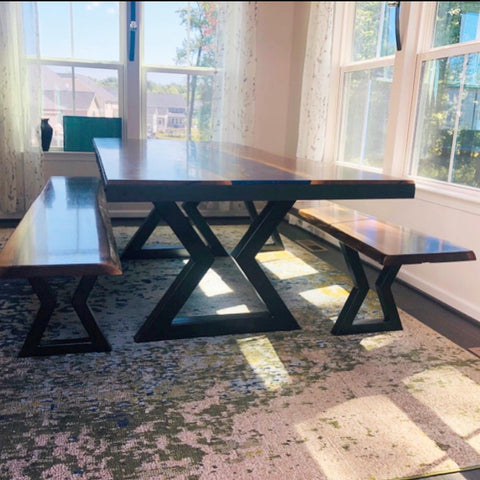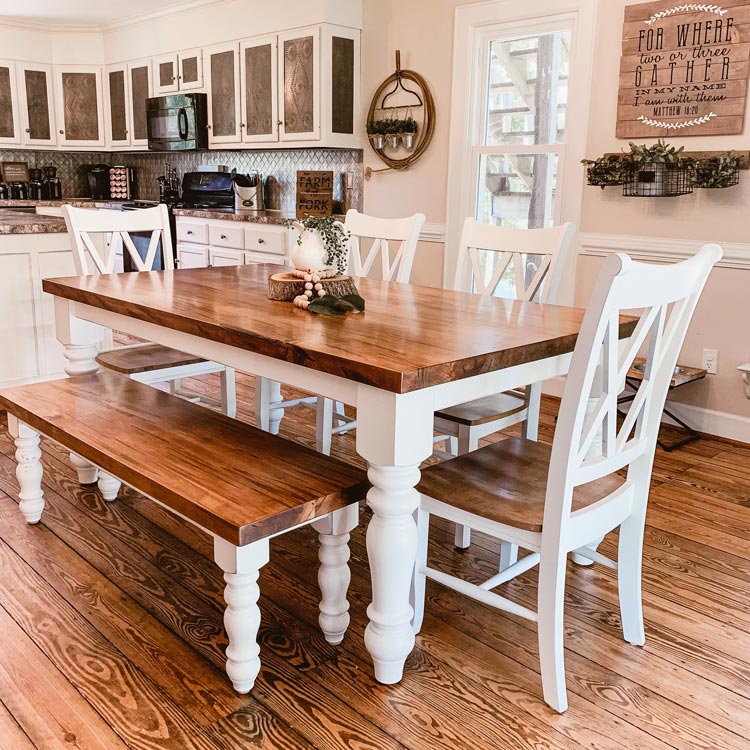From Conventional to Modern: Find the Perfect Eating Room Table Legs for Your Design
While timeless designs such as cabriole and turned legs evoke a feeling of ageless elegance, contemporary styles like hairpin and geometric alternatives provide a chance for striking visual passion. As you take into consideration these aspects, the inquiry remains: exactly how can you perfectly integrate these varied leg styles to develop a harmonious eating experience?
Comprehending Table Leg Styles
The selection of dining-room table leg designs can significantly influence both the visual appeals and capability of the room. Each leg design contributes distinct useful features and visual components, accommodating varied design choices and usage demands. Recognizing these styles is critical for picking the appropriate table that straightens with your general interior decoration vision.
For circumstances, conical legs use a clean, timeless appearance that can improve a room's elegance, while stand bases offer stability and optimize legroom, making them optimal for smaller spaces. Barrette legs, a characteristic of mid-century contemporary design, present a commercial style, permitting an airy, open feeling. Trestle legs stimulate rustic beauty, supplying robust assistance and a sense of eternity.
Furthermore, the selection of materials plays a significant duty. Wooden legs can bring heat and texture, whereas steel choices frequently share a smooth, modern vibe. Inevitably, comprehending table leg designs is vital for creating a natural dining area that shows individual design while making sure functionality and comfort. By thoughtfully considering these components, you can enhance both the visual and useful appeal of your eating room.
Standard Table Leg Options
When selecting dining area table legs, conventional alternatives usually symbolize classic style and craftsmanship. These designs show a rich heritage and a dedication to high quality, making them suitable for those that appreciate traditional aesthetic appeals.
Among the most famous traditional leg styles is the cabriole leg, identified by its graceful rounded form. This layout frequently features decorative carvings and is most commonly found in Queen Anne and Chippendale furniture. Another popular option is the turned leg, which flaunts a collection of smooth, rounded shapes that give a traditional look while preserving security.
Moreover, the straight leg, while straightforward, provides a durable and unadorned structure that can mix effortlessly with a range of tabletop designs. For those attracted to ornate detailing, claw-and-ball feet legs stimulate a sense of majesty and can work as a stunning prime focus in any kind of eating area.
Finally, pedestal bases, although not strictly legs, give a different standard choice that enables sufficient legroom and can be magnificently carved. Each of these traditional leg designs adds to the general ambiance of an eating space, marrying function with aesthetic allure.

Modern Table Leg Styles
Modern table leg designs supply a varied variety of styles that stress cutting-edge materials and tidy lines. These designs commonly prioritize functionality while acting as striking focal points within a dining area. Minimal visual appeals are common, with legs crafted from products such as metal, glass, and crafted timber, which add to a modern and airy feeling.
One popular style is the barrette leg, characterized by its slender, conical structure that supplies security without frustrating the table go right here top (dining room table legs). This style is usually discovered in mid-century modern-day furnishings and can effortlessly complement different eating table shapes. One more fad is using geometric forms, where legs may handle asymmetrical or angular types, including visual passion and a touch of artistry

Mixing Styles for Unique Areas
Frequently, homeowners look for to develop distinct dining rooms that show their individual style by blending various layout elements. This approach permits the consolidation of diverse visual appeals, resulting in an unified yet distinct environment. For example, combining a rustic wooden table with sleek, modern-day steel legs can produce an attractive comparison that boosts the space's total appeal.
Furthermore, incorporating vintage table legs with modern table tops can stimulate a feeling of background while keeping a modern sensibility. Such mixes not only display private taste however also encourage imagination, permitting home owners to curate an area that feels both personal and inviting.
Color plays a crucial role in this mixing process; choosing table legs that enhance or comparison with the existing color design can enhance visual interest. Whitewashed legs can soften the boldness of a dark table surface, creating a well balanced aesthetic.
Tips for Choosing the Right Legs
Choosing the right table legs is important for achieving both functionality and aesthetic charm in your eating area. Begin by taking into consideration the general style of your room. Standard settings gain from legs that include intricate carvings or transformed styles, while modern spaces may require sleek, minimal styles.
Following, assess the elevation and security of the legs. dining room table legs. Common dining tables vary in between 28 to 30 inches in elevation, so ensure the legs match this measurement for convenience. In addition, robust materials, such as hardwood or steel, can improve security and long life
Review the leg form also-- options consist of straight, tapered, or pedestal styles. Straight legs supply a timeless appearance, while tapered legs can include a touch of beauty. Pedestal bases he said give ample legroom and are excellent for smaller spaces.
Final Thought
In summary, selecting the ideal eating space table legs requires careful consideration of both traditional and modern-day styles. By harmonizing leg style, height, and product with the general décor, a cohesive and welcoming environment can be achieved.
The variety of dining space table leg styles can considerably affect both the looks and performance of the space. Ultimately, recognizing table leg styles is crucial for producing a my explanation cohesive eating area that shows individual style while making sure practicality and comfort.One of the most renowned conventional leg styles is the cabriole leg, identified by its elegant rounded shape. Straight legs offer a traditional appearance, while conical legs can add a touch of beauty.In summary, picking the perfect eating room table legs calls for careful factor to consider of both modern-day and typical designs.